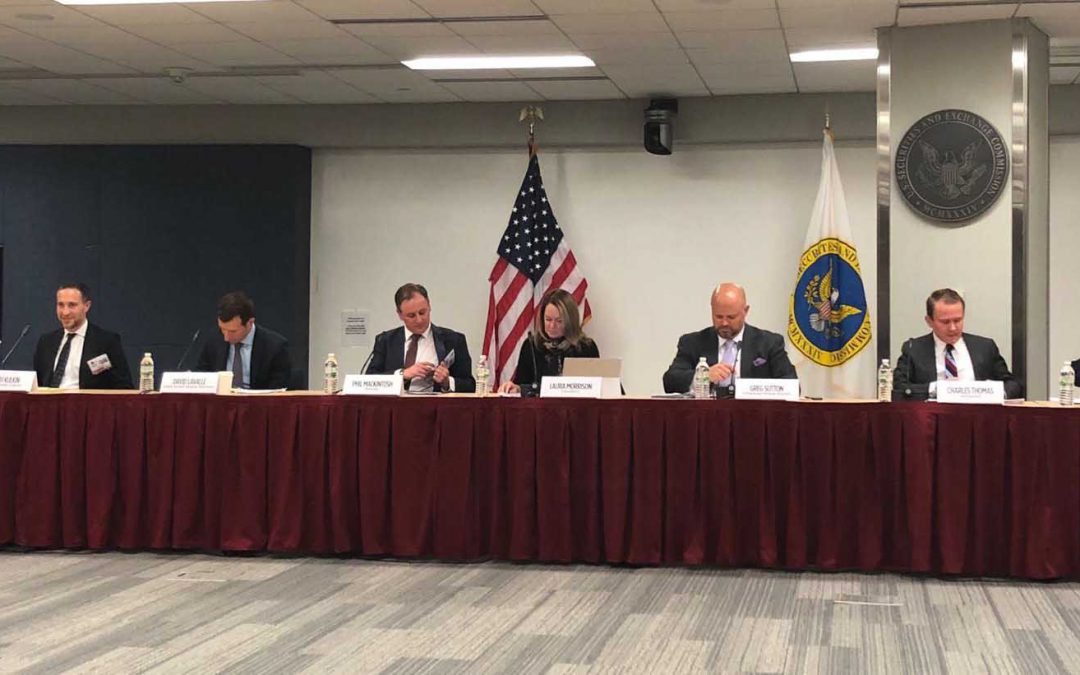WASHINGTON —Senior Securities and Exchange Commission staff indicated Monday at a roundtable discussion on improving equity market structure that it would consider actions to increase liquidity of thinly-traded securities.
“I think we all agree that there are issues here that should be addressed in some way and there’s more work to be done in terms of getting to the solutions right now,” Brett Redfearn, director of the SEC’s Division of Trading and Markets, said at the event.
Currently in the United States, there are 13 U.S. stock exchanges. SEC regulated in 1934 that securities listed on any national securities exchange can be traded by other such exchanges, as well as around 40 private broker-run trading venues, known as the unlisted trading privileges.
The Department of Treasury argued in October in a report that these unlisted trading privileges do not benefit less-frequently traded stocks because the sellers and buyers can’t easily find each other.
Jason Vedder, director of global trading and operations at Driehaus Capital Management, said at the roundtable that he was frustrated by this fragmented trading activity because he has to go to many different venues to find buyers and sellers. “It’s a cat-and-mouse game,” said Vedder, “If something’s not working, I’m just moving on to the next venue.”
Vedder did note that a focus on limited venues can benefit certain firms by reducing the number of people who know a specific trader’s intentions on a stock.
Of the approximately 4,656 corporate stocks currently listed on U.S. exchanges, nearly 28 percent—more than one out of every four—have daily trading volume of less than 100,000 shares, according to an SEC report released April 10.
For startups, a small trading volume of their stocks can make it difficult to raise capital through an initial public offering, according to Adam Epstein, founder of Third Creek Advisors, which advises micro-cap companies. “These companies do not have all of the access that the larger cap companies have and enjoy all of the benefits of being public companies because of the liquidity you actually have,” Epstein said at the SEC roundtable.
The Treasury Department recommended in its October report that the SEC gives issuers of less liquid stocks an option to trade on a limited number of venues until liquidity reached a minimum threshold.
“The complexity of the market is a challenge,” Frank Hatheway, chief economist for Nasdaq, said during the discussion. When trading activity can be spread over multiple exchanges, Hatheway noted, it becomes harder to locate sources and determine the relevant prices.
Hathway said that an ideal action for regulators is an “opt-in application” that would enable issuers to choose which venues to trade on and also offer companies “the ability to opt out” when they think their liquidity is not a problem.
If issuers can choose which exchange to trade on, exchanges will be significantly affected as competition between different venues increases, Kuma Venkataraman, professor of Finance in Southern Methodist University, one of the panelists at the discussion, said in a Tuesday interview. “Consolidating all trading might lead the listing exchange to have monopoly power,” said Venkataraman, referring to the New York Stock Exchange, which handles the most equity trade in the country.
Venkataraman said that SEC will probably consider the proposal from the Treasury Department but needs to keep the potential market monopoly in mind.
The SEC declined to comment on its current process and next moves on the market structure.
Monday’s meeting was the first of the three planned SEC roundtables on equity market structure issues. Upcoming roundtables are set to discuss topics related to market access and combat retail fraud.

